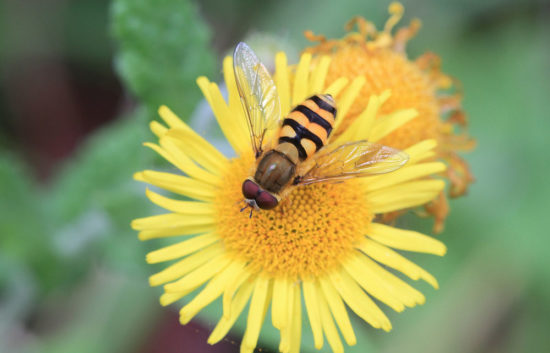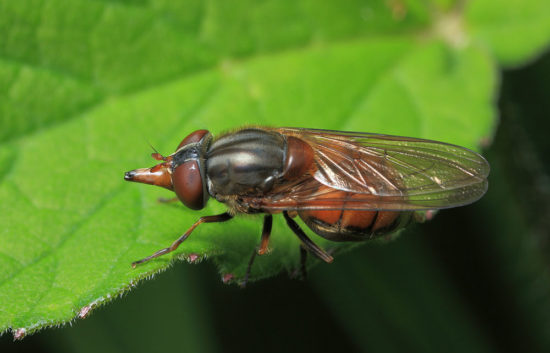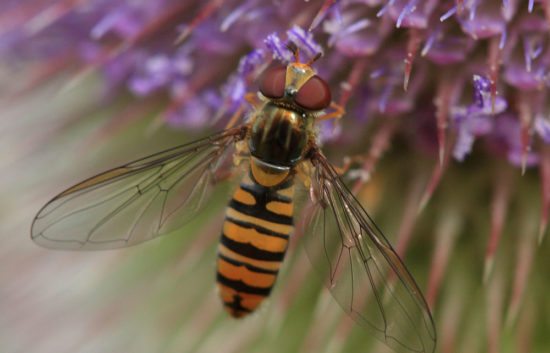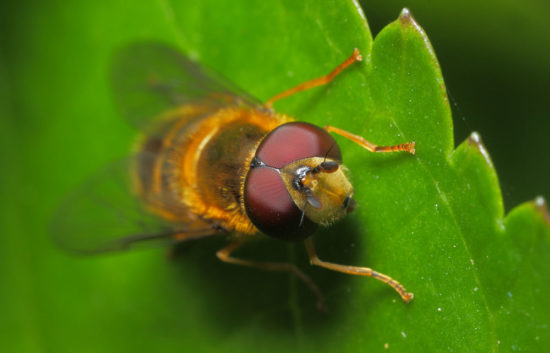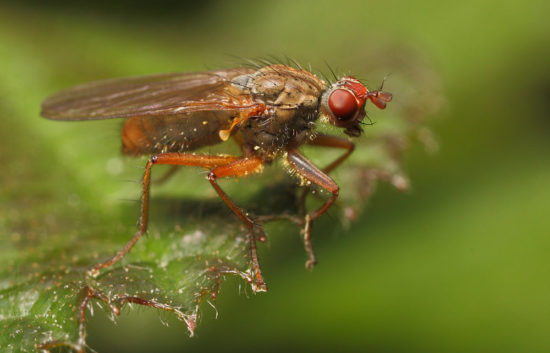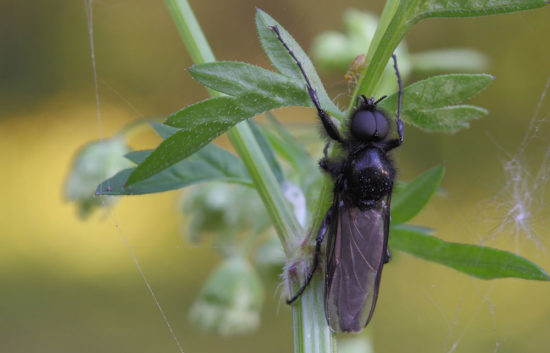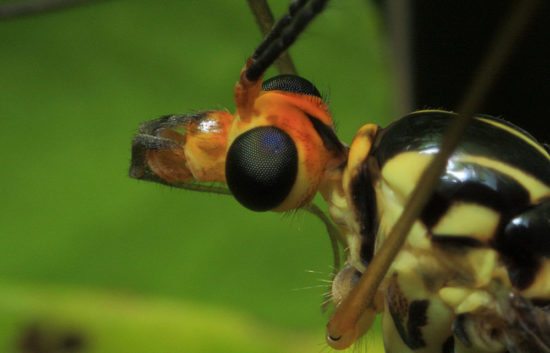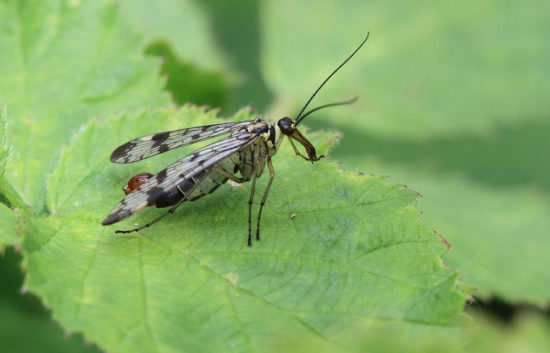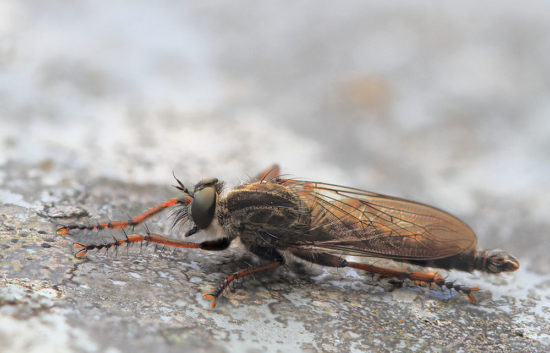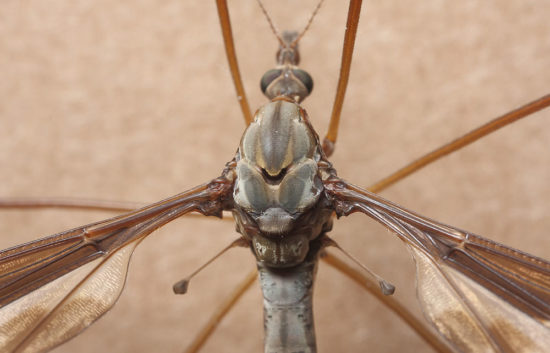Rhingia: An unmistakable genus of dumpy orange overfills with a very obvious, exceptionally long rostrum that encloses the proboscis and allows the fly to feed on nectar and pollen in deep flowers, such as Red Campion, that other overfills cannot...
Episyrphus: Britain’s commonest hoverfly, commonly known as the Marmalade. This is an extremely variable species whose background colour is highly influenced by the temperature at which the larvae developed. Larvae in hot conditions produce adults with more orange markings (sometimes...
Epistrophe: Black-and-yellow banded overfills with mainly yellow faces that fly in the Spring and early Summer. Apart fro E. elegans, which is quite distinctively marked they are tricky to separate from other yellow-banded genera such as Syrphus. Epistrophe nitidicollis: This...
Yellow Dung-fly (Scathophaga stercoraria): Theses are familiar, albeit not very popular flies. They swarm around cow dung in large numbers, and the golden-haired males are particularly conspicuous. They are very active flies, constantly mating, laying eggs, or making forays to...
It is known as the St Mark’s Fly because it appears at or about St Mark’s day, at the end of April. The flies settle on vegetation and flowers, and fly off slowly, trailing their legs, if disturbed. Their favoured...
Although similar in general form to the commoner ‘daddy long-legs’, the Spotted Cranefly is much more distinctively marked, and can be readily recognised. It is common and widespread, and can occur in a variety of habitats such as woods, old...
Scorpion flies are so-called because the males have an upturned and curled over sting-like tail, resembling a scorpion, though they are quite harmless. They live as scavengers, or weak predators, including the skilful removal of prey from spiders’ webs without...
A group of bristly predatory flies which mainly catch other insects in mid-air. All the robber flies have a powerful beak, with which they quickly penetrate their victims, and very hairy faces. The larvae feed in mammal dung, often of...

